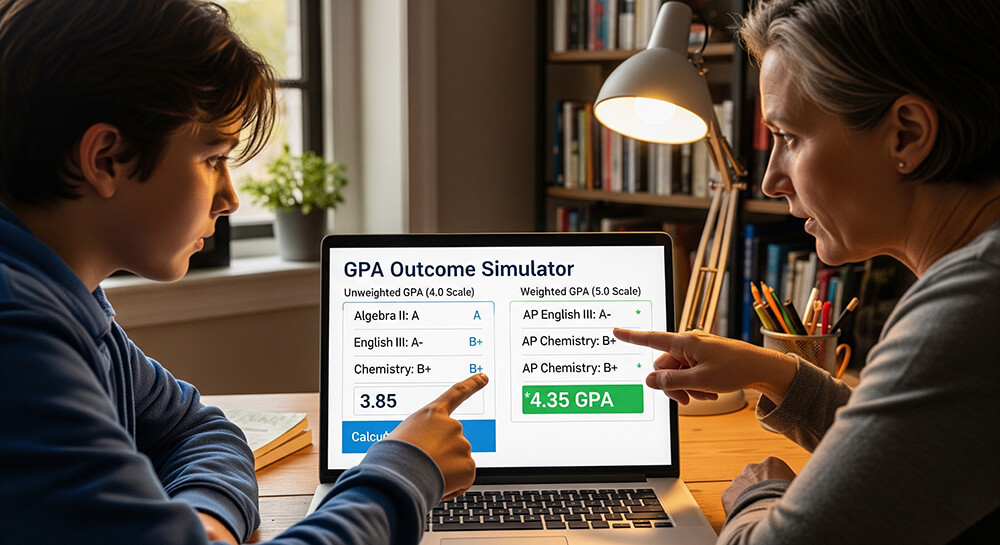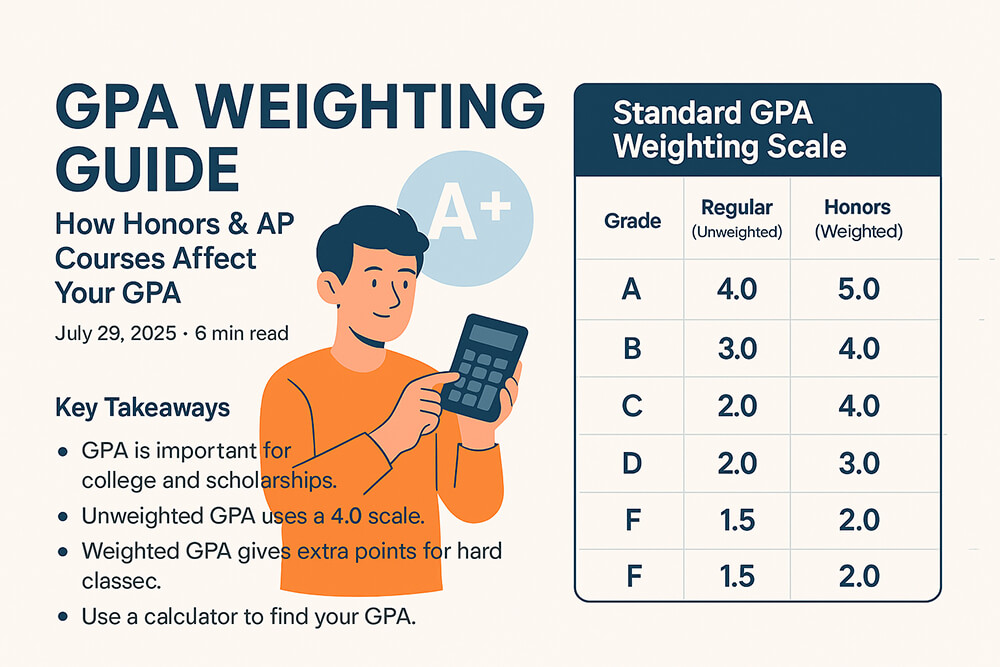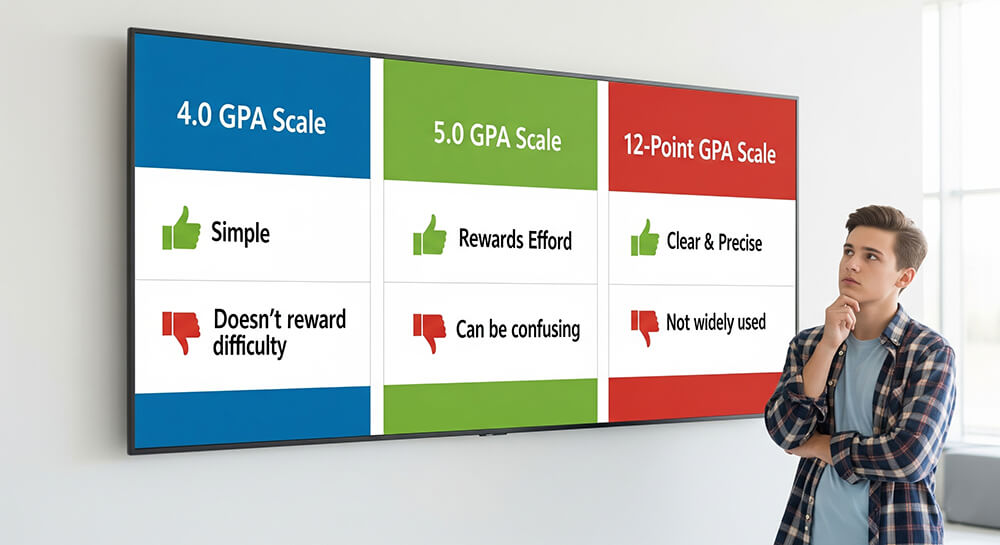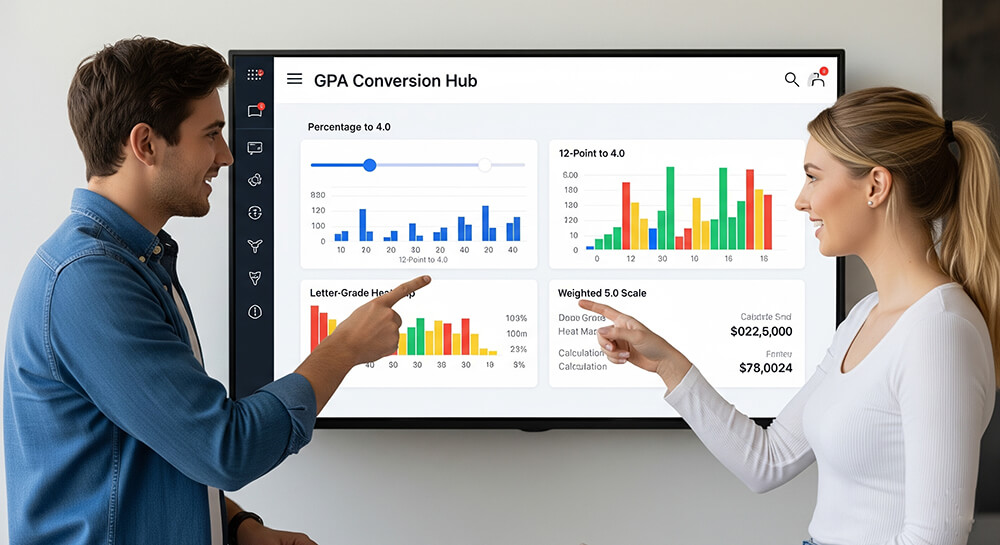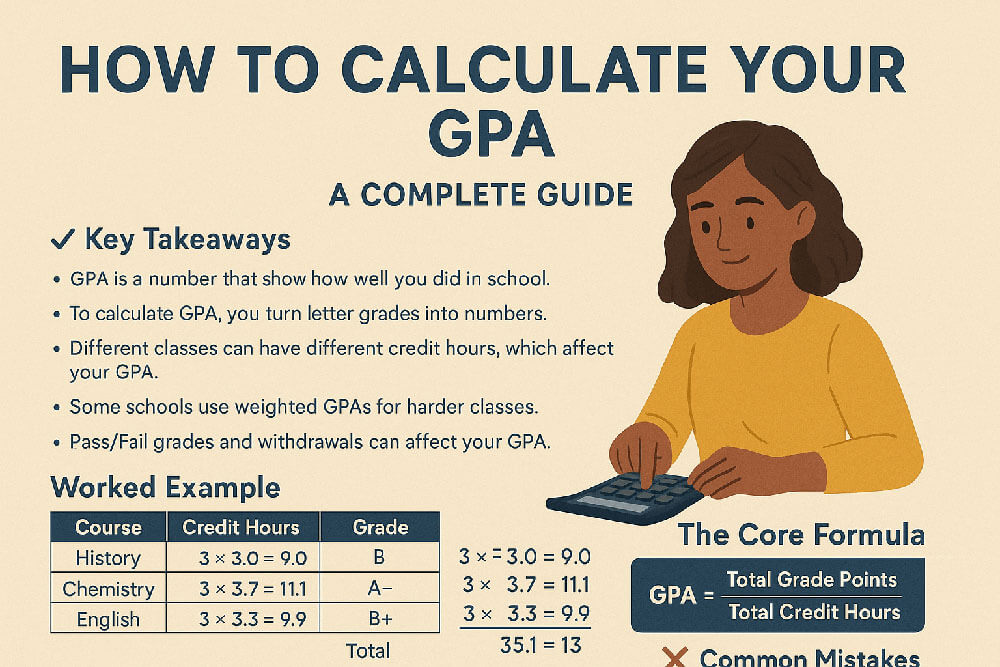Key Takeaways
- 4.0 Scale: This is the standard, unweighted GPA scale used by most schools. An 'A' is a 4.0, a 'B' is a 3.0, and so on. It treats all classes equally.
- 5.0 Scale: This is a weighted scale. It gives more points for harder classes like Honors, AP, or IB. An 'A' in an AP class might be a 5.0, while an 'A' in a regular class is a 4.0.
- 12-Point Scale: This scale is less common but offers more detailed grading. Each number corresponds to a specific percentage range, which can make grade differences clearer.
- 10-Point Scale: Often used in Latin American countries, this scale aligns closely with percentages. An 8.5 grade is like an 85%.
- Conversion is Key: Colleges need to compare students from different schools. Using a weighted vs. unweighted GPA calculator helps translate your grades into a standard format.
Understanding the Different Types of GPA Scales
A Grade Point Average (GPA) shows how well you did in your classes. But not all schools measure it the same way. There are many types of GPA scales. The most common is the 4.0 scale. Some schools use a 5.0 scale to reward students for taking tough classes. Others use a 12-point or 10-point system. Knowing your school's system helps you track your progress. It also helps you understand what colleges see on your transcript GPA audit guide.
The 4.0 vs. 5.0 GPA Scale Showdown
The biggest difference between these scales is weight. A 4.0 scale is unweighted. Every class has the same maximum GPA. A 5.0 scale is weighted. It gives you extra points for advanced courses. For example, an A in a regular class is a 4.0, but an A in an AP class could be a 5.0. You can use a 4.0 vs. 5.0 GPA outcome simulator to see how your grades change on each scale. This weighted vs. unweighted GPA explained guide shows why the distinction is important for college applications. Our guide to the 5.0 GPA scale offers more detail.
How Course Weighting Changes Your GPA
Course weighting rewards hard work. Schools add "weight" to grades from difficult classes. This is why some students have GPAs higher than 4.0. A good GPA weighting guide for Honors and AP can explain how much extra credit you get. International Baccalaureate classes also receive extra weight, and an IB to GPA conversion guide is useful for those students. Understanding this system helps you see that weighted GPA myths debunked often show that colleges look at both weighted and unweighted scores. This also relates to how credit hour weighting impacts GPA.
Comparing the 12-Point and 10-Point GPA Scales
Some schools use different scales entirely. The 12-point scale uses whole numbers, which some find easier to understand. The 10-point scale is common outside the U.S. and works well with percentage grades. A 12-point vs. 10-point GPA conversion tool is necessary for students applying to U.S. colleges. You can use a 12-point to 4-point scale chart to see how they line up. Similarly, a 100-point to 5-point conversion helps translate percentage-based grades into a weighted GPA format.
The History of the GPA System
The idea of grading students is very old. The history of GPA began at Yale University in the 1700s. Early systems used words like "best" or "good." Letter grades (A-F) appeared in the late 1800s. The 4.0 scale became popular in the mid-20th century. Over time, schools noticed a trend of GPA inflation vs. deflation, where average grades started to rise. This led many schools to adopt weighted scales to better recognize academic rigor and challenge.
Pros and Cons of Common GPA Scales
Each GPA scale has good and bad points. The pros and cons of GPA scales are important to consider.
| Scale | Pros | Cons |
|---|---|---|
| 4.0 | Simple and widely understood. | Does not reward taking harder classes. |
| 5.0 | Rewards students for challenging courses. | Can be confusing to compare across schools. |
| 12-Point | Clear, whole numbers. No complex decimals. | Not common, requires conversion. |
| 10-Point | Works well with percentage grades. | Less familiar in the U.S. high school system. |
Knowing how school districts calculate GPA helps you understand your own transcript better.
Converting Between Different GPA Scales
Because so many scales exist, conversion is essential. You need GPA conversion charts and tools to translate your grades accurately. A percentage to 4.0 GPA conversion is one of the most common needs. The letter to point GPA conversion guide helps you understand the math behind the numbers. If you need to see your GPA as a percentage, a GPA to percent reverse calculator can help. A letter grade heat map can also visualize your academic performance.
How to Calculate Your GPA Accurately
Knowing how to calculate GPA puts you in control of your academic future. The basic GPA formula guide involves multiplying your grade points by credit hours, then dividing by the total hours. However, it can get tricky. To avoid mistakes, use an online tool like The GPA Calculator homepage. This helps prevent common GPA calculation errors to avoid. Understanding quality points vs. GPA explained is also a key part of the process.
Advanced GPA Calculation Scenarios
School is not always simple. You might have unique situations that affect your grades. A plan for GPA planning for incomplete grades can save you stress. An incomplete grades scenario planner shows how a future grade will change your GPA. Other tools like a transfer credits GPA integrator are vital for students changing schools. It is also useful to know how pass/fail grades impact your GPA since they are treated differently. A repeat course GPA recalculator is perfect for students looking to improve their grades.
Specialized GPA Calculators for Every Student
Different students have different needs. A freshman year GPA predictor helps new students start strong. A high school GPA calculator is tailored for secondary school courses, while a college GPA calculator handles university-level credits. You can track your progress with a semester GPA calculator or see the big picture with a cumulative GPA calculator. Some students need to check their standing with a Dean's list eligibility checker or use a last 60 credits GPA calculator for graduate school applications. Even a mid-term grade projection slider can help you stay on track.
You can also use tools for very specific needs. A dual-degree GPA splitter helps students in multiple programs. A trimester GPA calculator is for schools with a different academic calendar. The multi-semester GPA bulk import tool saves time. Other helpful tools include a drop lowest grade analyzer, a study abroad grades GPA integrator, and a gpa trend graph generator. Students can also separate grades with a core vs. elective GPA tool, a prerequisite-only GPA calculator, or a major change GPA impact tool.
Frequently Asked Questions (FAQ)
What is the main difference between a 4.0 and 5.0 GPA scale? A 4.0 scale is unweighted, meaning every class is graded on the same four-point system. A 5.0 scale is weighted, giving extra points for more challenging classes like AP or Honors.
Why do some schools use a 12-point GPA scale? The 12-point scale offers more specific grading. Each number corresponds to a narrow percentage range, which can provide a clearer picture of a student's performance than a simple letter grade.
Can I convert my GPA from a 10-point scale to a 4.0 scale? Yes. You can use online conversion tools to translate your 10-point GPA into the standard 4.0 scale that U.S. colleges recognize. This is important for international students.
Does taking AP classes guarantee a GPA above 4.0? No. You must earn high grades (usually A's or B's) in those AP classes to get the extra weight that pushes your GPA above a 4.0. A low grade in an AP class can still lower your overall GPA.


